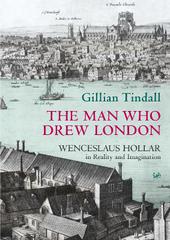
|
The Man Who Drew London
Paperback / softback
Main Details
Description
Gillian Tindall's books take little-known characters and - through imaginative reconstruction - make their life stories stand for 'big' events in history. Hollar stands for the English Civil War, the exile of Charles II, the Restoration, the Plague and the Fire - and the expansion of London into Covent Garden and the meadows of Islington. Born in Prague, Hollar was the artist/engraver who drew London before and after the Great Fire of 1666. It is because of his panoramas that we know (for e.g.) what Old St Paul's was like, before it was completely destroyed and subsequently rebuilt by Wren. As a young engraver making a precarious living wandering round Europe during the 30 Years War, he was picked up by a colourful English figure: Lord Arundel who had a passion for art, beautiful things and collecting. Arundel gave him employment and brought him back to London, where Hollar made a name for himself with his fashion plates, maps and panoramas. During the Civil War, Hollar was in exile with the royalists in Antwerp. He returned to England ahead of Charles II, and continued to make his unique and invaluable record of the period of the Restoration - and of London during a time of catastrophe and change.
Author Biography
Gillian Tindall is a master of miniaturist history, well known for the quality of her writing and the scrupulousness of her research; she makes a handful of people, a few locations or a dramatic event stand for the much larger picture, as her seminal book The Fields Beneath, approached the history of Kentish Town, London. She has also written on London's Southbank (The House by the Thames), on southern English counties (Three Houses, Many Lives), and the Left Bank (Footprints in Paris), amongst other locations, as well as biography and prize-winning novels. Her latest book, The Tunnel through Time, traced the history of the Crossrail route, the forthcoming 'Elizabeth' line. She has lived in the same London house for over fifty years.
ReviewsHer intention is that fact and fiction should complement each other. They do perfectly -- Frances Spalding * Sunday Times * With clarity of purpose and clarity of style, she has written a book that is both elegant and thoughtful -- Michael Prodger * Sunday Telegraph * Gillian Tindall is a tapestry maker. She finds patterns in history - woven from close research into people and places - that no one else would have the persistence and insight to pursue * Independent *
|